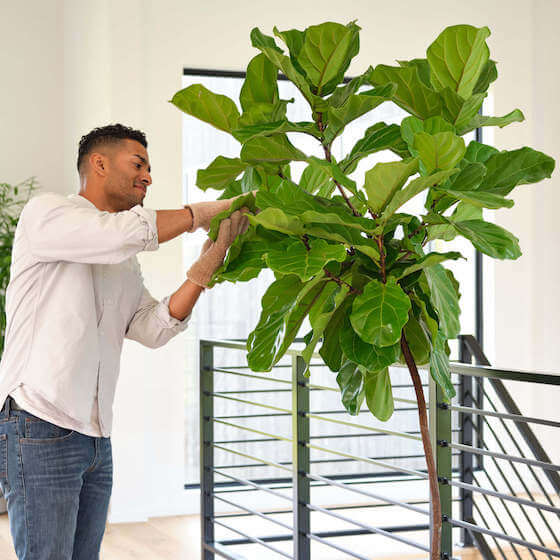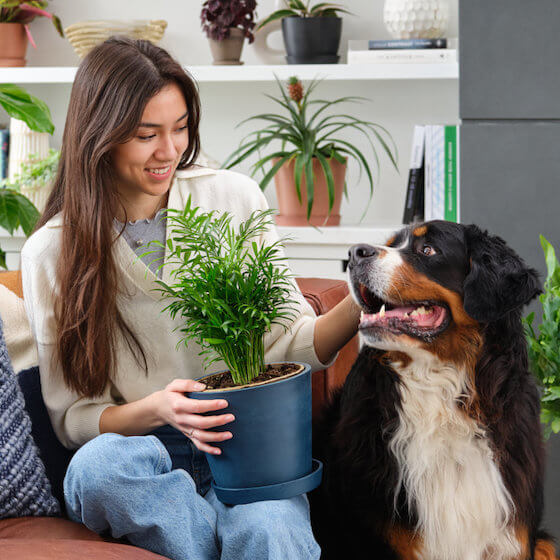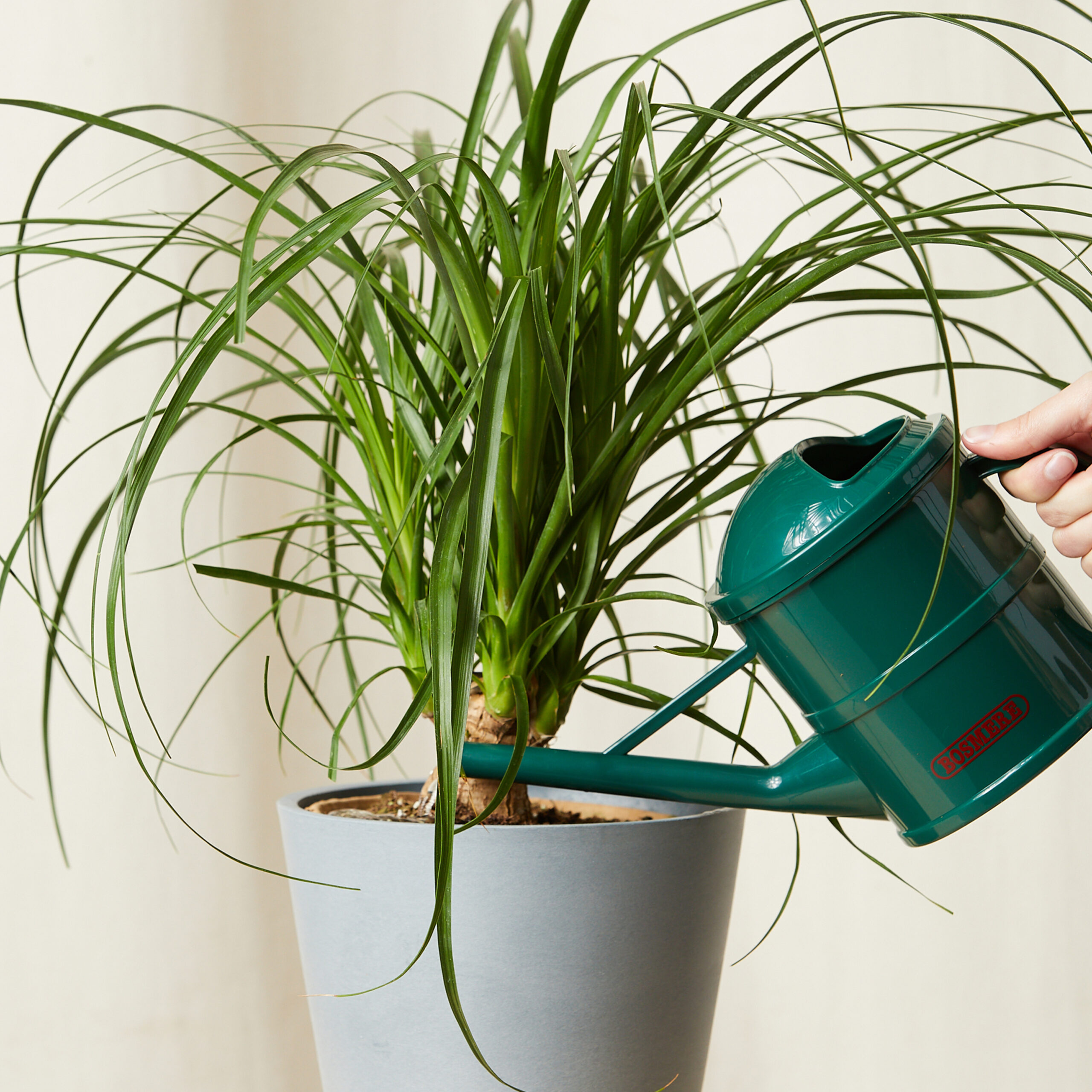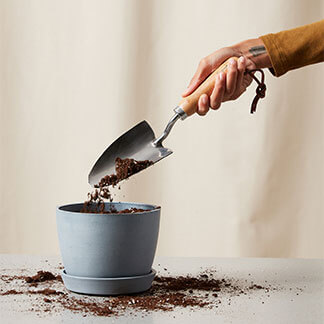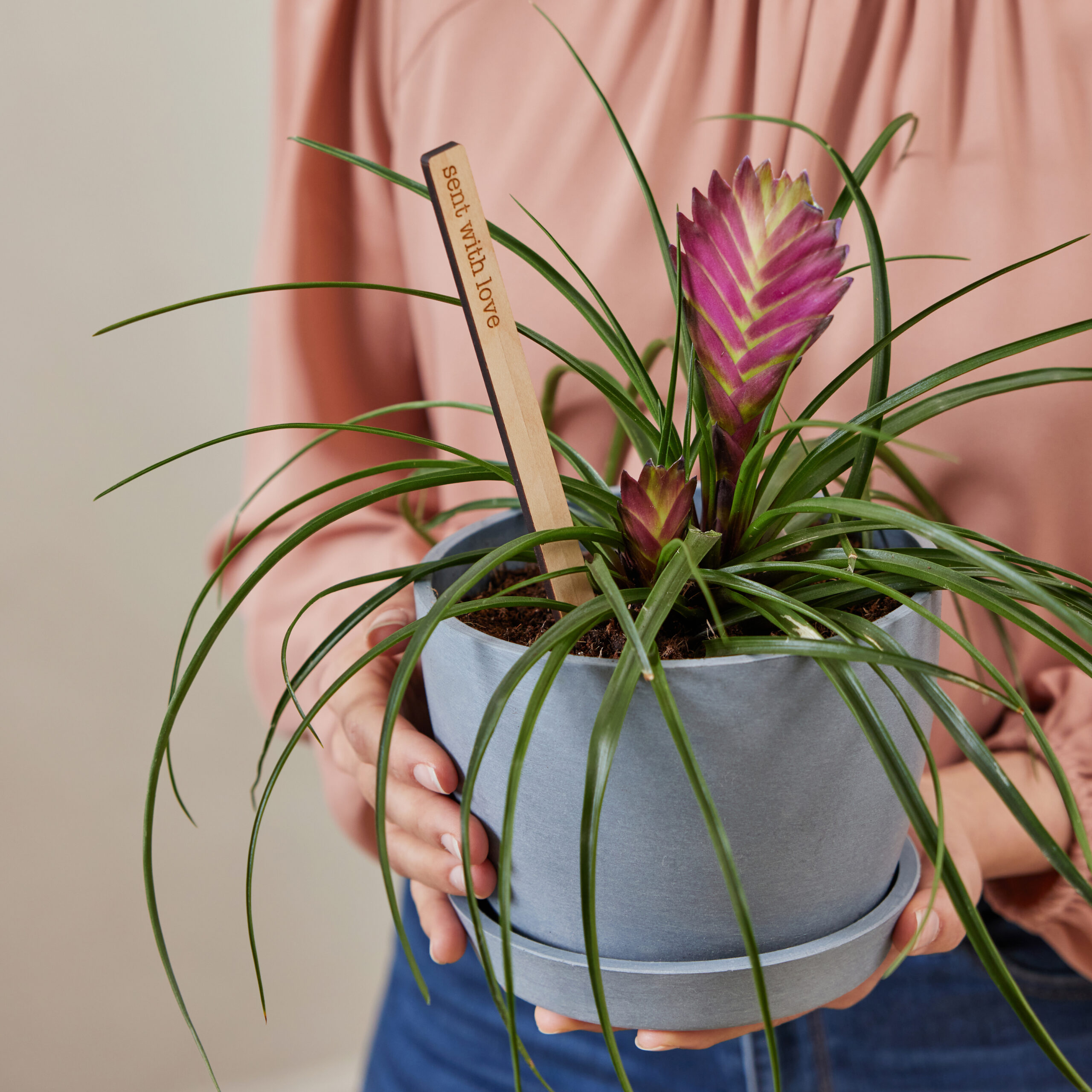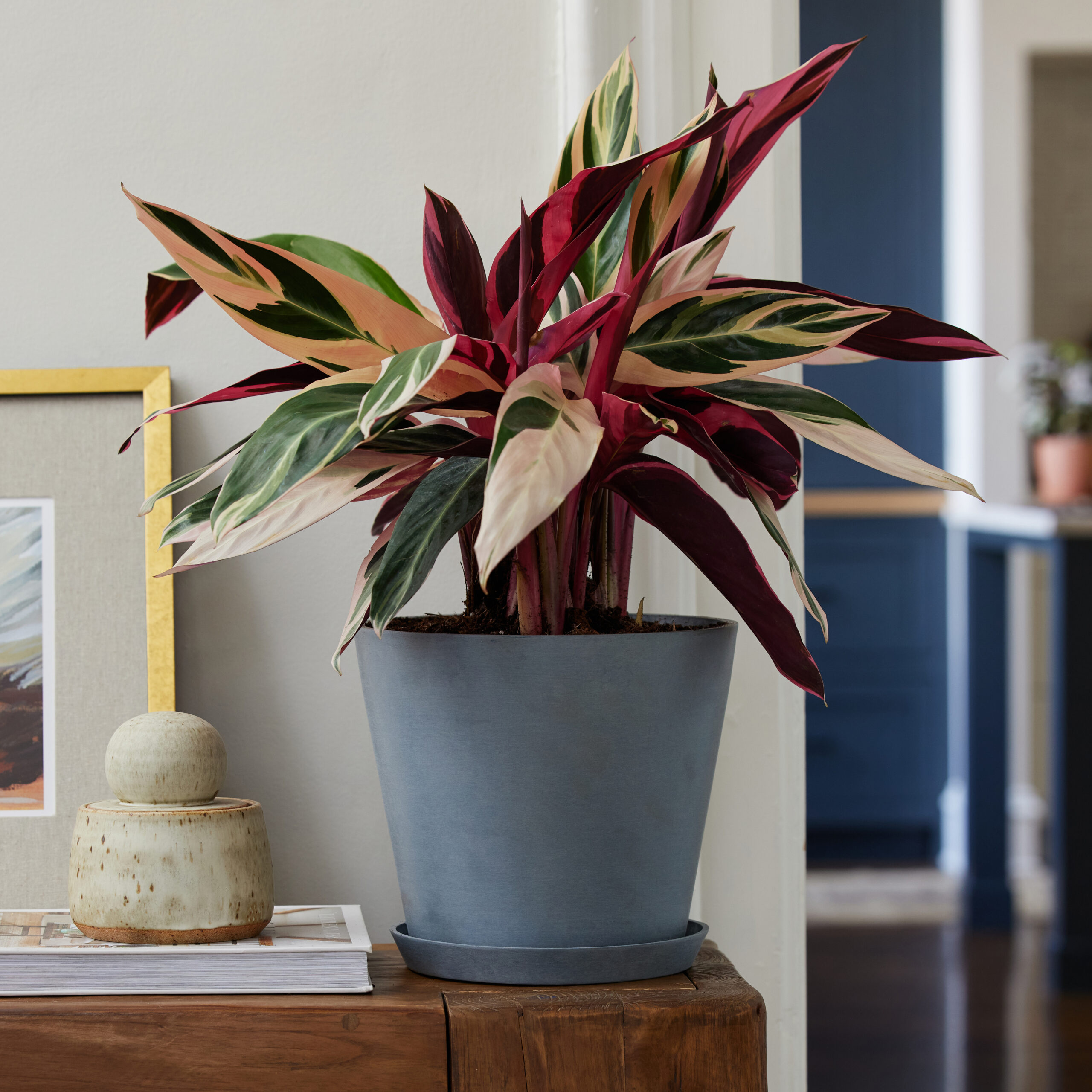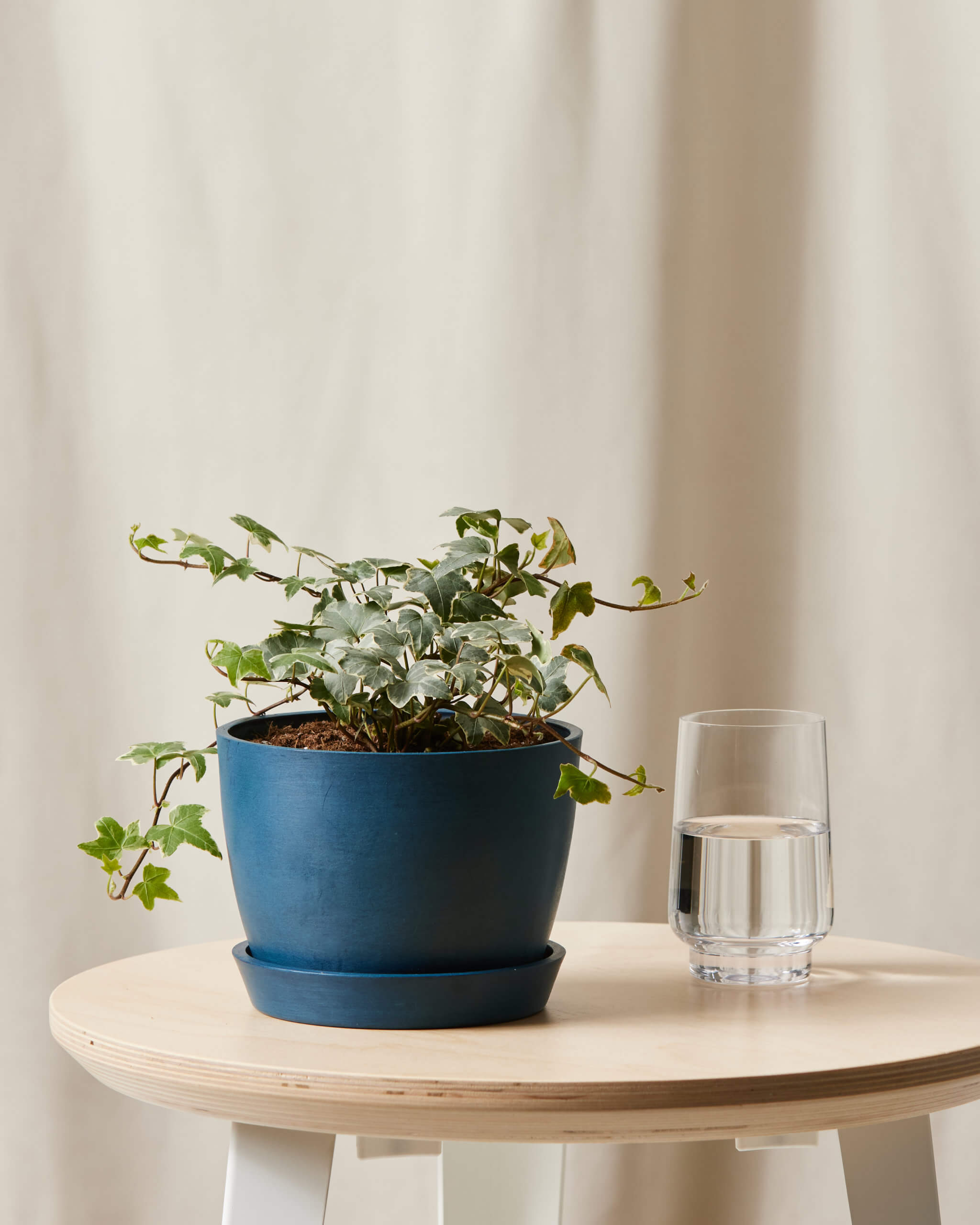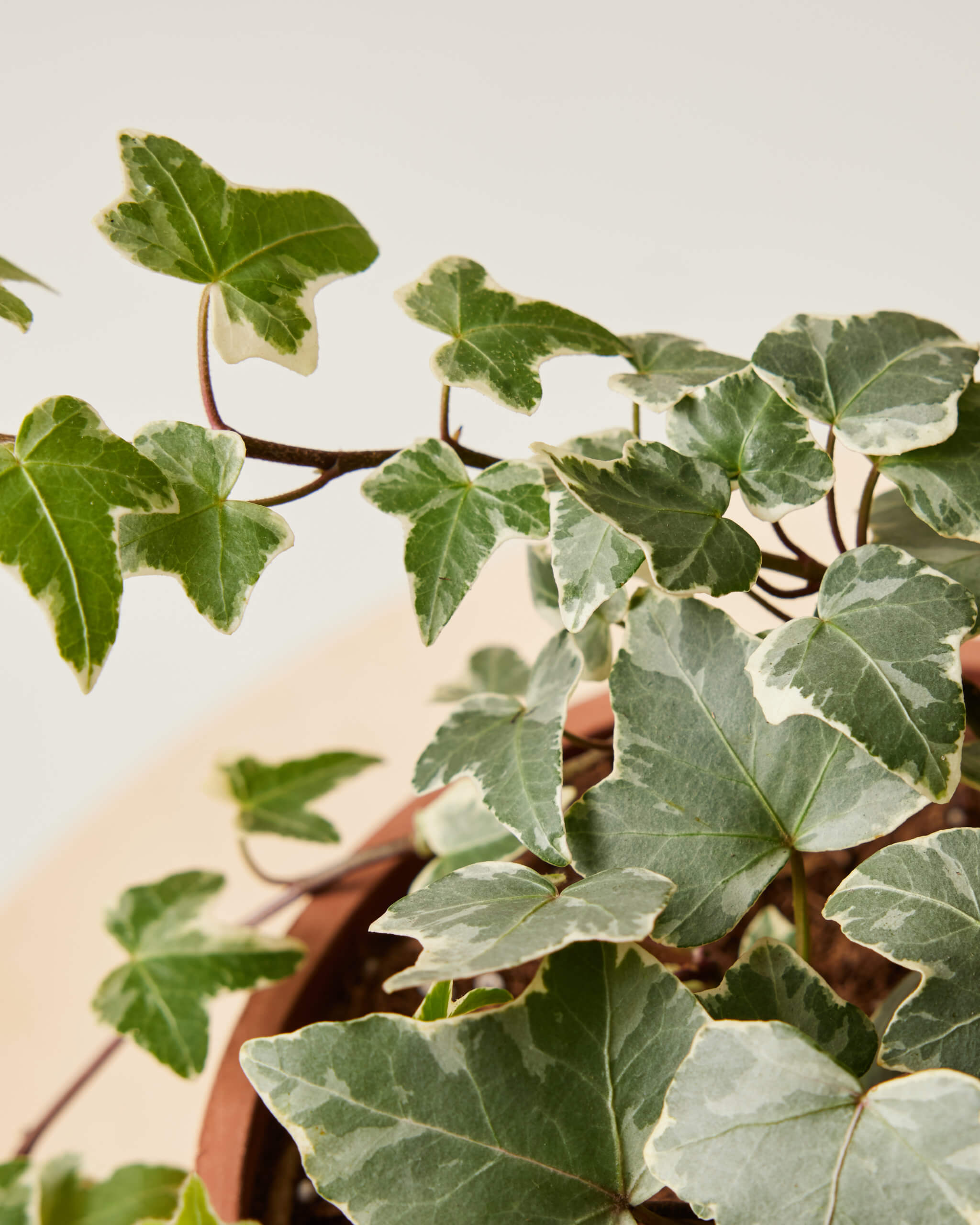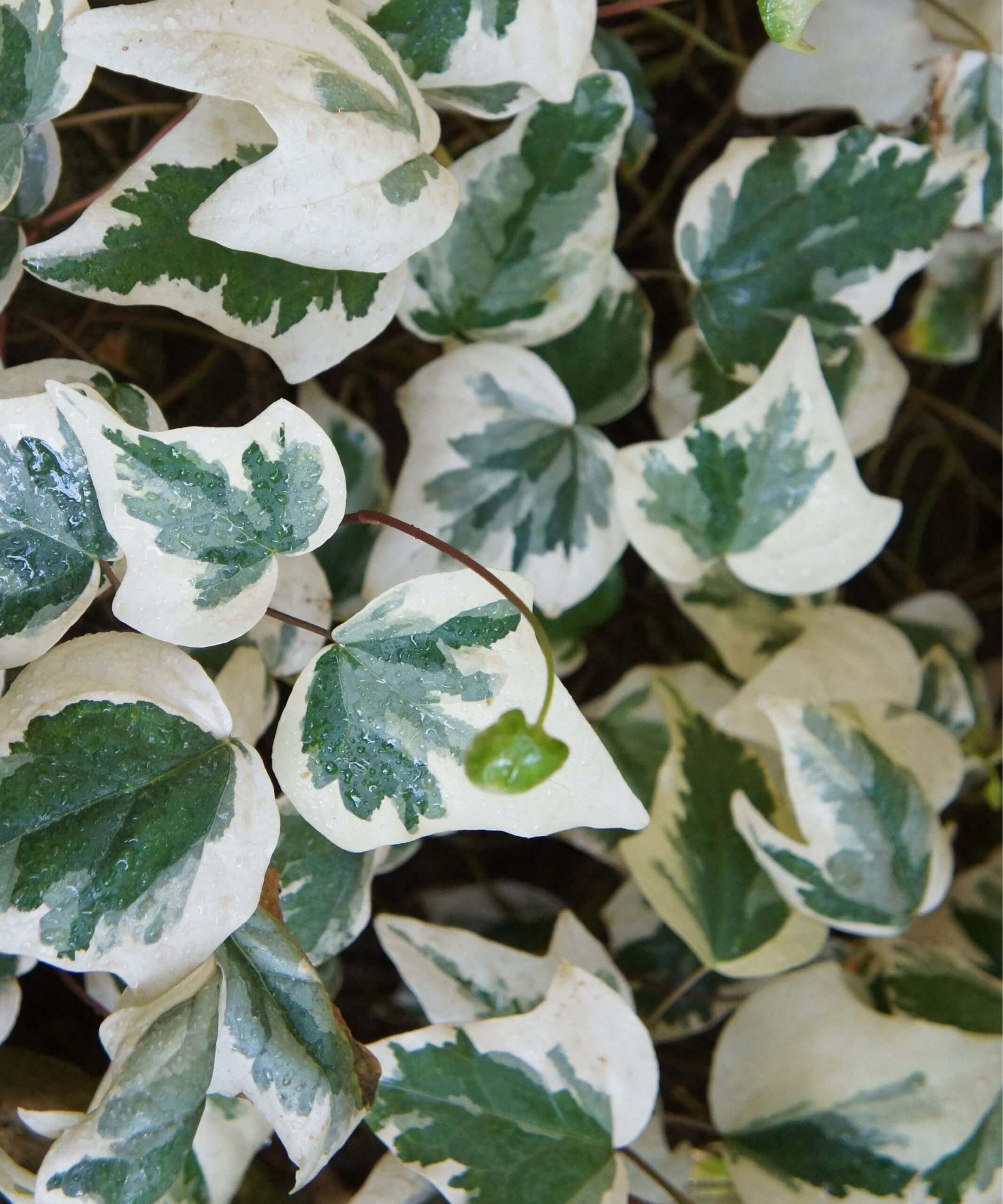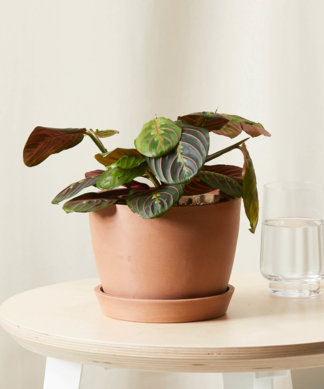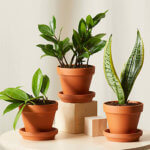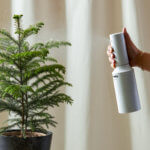How to care for your Ivy
Use these instructions to care for an Ivy. This guide will tell you how to water an Ivy; its light, temperature, humidity preferences and any additional care it might need to help it grow.
Canary Island Ivy
Ivy plants prefer bright indirect light but no direct sun as the foliage will burn. In lower light, the ivy will become leggy and sparse.
Let the top 25-50% of soil dry before watering. Allow the water to flow freely from the drainage holes on the bottom of the pot. Always empty the saucer of any water. Ivy does not like its roots constantly wet. Crispy brown leaves indicate over-watering, and leaf drop indicates under-watering.
This plant loves to be misted with room-temperature water. Feel free to do this daily, especially in the winter when the air is very dry. Not only does misting provide humidity, but it also keeps the pests away.
Your Ivy prefers temperatures between 60-75°F.
Ivy thrives when fed once per month in the spring and summer with a general purpose indoor plant fertilizer at ½ strength. No need to feed in the fall or winter when they are resting; fertilizer could do more harm than good.
Ivy is mildly toxic to humans and pets, typically, ingestion will cause mouth and stomach irritation and possible vomiting.
Feel free to trim up your Ivy regularly to keep it in shape. Snip off trailing vines that are just too long with a pair of sharp scissors or pruning shears to keep your plant looking full. You’ll get a bushier plant this way. You can prune (cut) your plant back by as much as half at a time — you won’t hurt this robust plant at all.
English Ivy
English Ivy Plants prefer bright indirect light. During the winter, however, you might need to place your Ivy in a spot where it will receive direct sunlight for a short while, especially on a cloudy day. In less light, the ivy will become leggy and sparse. Thus, in some cases, a grow light might be helpful.
Your Ivy Plant feels the most comfortable in moist soil but not soggy. Let the top 25-50% of the soil dry out before watering. Allow the water to flow freely from the drainage holes on the bottom of the pot. Always empty the saucer of any water. English ivy does not like its roots constantly wet. Crispy brown leaves indicate over-watering, not under-watering.
Your Ivy Plant loves a daily misting with room-temperature water especially in the winter when the air is very dry. Not only does misting provide humidity it also keeps the pests away. You can also keep a humidifier in the same room or place your plant in a humid environment such as the bathroom or the kitchen.
English ivy plants grow best in temperatures between 70-90°F. They also prefer a consistent temperature rather than large fluctuations. So, remember to keep your plant away from vents and drafty windows or doors.
English ivy thrives when fed two times per month in the spring and summer with a general-purpose indoor plant fertilizer at half-strength. The best ratio to opt for is a 20-20-20 formula. There’s no need to feed in the fall or winter when the plant goes into a natural resting period. Fertilizing during this time could do more harm than good.
English ivy is mildly toxic to humans and pets. Typically, ingestion will cause mouth and stomach irritation and possible vomiting.
Feel free to trim up your English ivy regularly to keep it in shape. Snip off trailing vines that are just too long with a pair of sharp scissors or pruning shears to keep your plant looking full. You’ll get a bushier plant this way. You can prune (cut) your plant back by as much as half at a time — you won’t hurt this robust plant at all.
Swedish Ivy
Your Swedish ivy will perform best in bright to medium-bright indirect light. It can tolerate a direct morning sun,, but avoid areas in which it will be exposed to harsh afternoon sun. It can also tolerate low light levels, but will exhibit slower, leggy growth.
Water your Swedish ivy when the top 50% of potting mix is dry. Water thoroughly, and be sure to empty the saucer of any excess water to prevent root rot. With its semi-succulent stems and leaves, the plant is forgiving of an occasional missed watering.
Your Swedish ivy can survive in a low humidity environment but will thrive with higher humidity levels. Mist the leaves regularly, place a humidifier nearby, or use a pebble tray to raise the humidity.
Your Swedish ivy prefers temperatures between 60-80°F. Avoid cold drafts and sudden temperature changes.
For best results, use a liquid houseplant fertilizer diluted to half the recommended strength once a month during the spring and summer. Never apply fertilizer to dry soil; always make sure the soil is damp before feeding your plant.
Your Swedish ivy is considered to be non-toxic to pets and humans.
If you would like to encourage flowering, ensure the plant is placed in an area that receives a few hours of direct morning sunlight. Swedish ivy plants will typically flower in late spring, and flowers should be removed once spent. If your Swedish ivy is looking leggy, the stems can be cut back by up to half their length. Stem cuttings will root easily in potting mix.
English Ivy 'Glacier'
Your English Ivy prefers indirect bright light. It can maintain in lower light, but growth will be slow. Too much light will burn the foliage.
Water your English Ivy when the soil volume is 25-50% dry. While these plants like to keep somewhat moist. They will not tolerate “wet feet”, or dying out all the way. Water thoroughly until you see water flow out of the drainage hole, and discard the excess water.
This plant loves to be misted with room-temperature water; feel free to do this daily, especially in the winter when the air is very dry. Not only does misting provide humidity it also keeps the pests away.
English ivy plants can grow in temperatures between 45-80°F; they prefer a consistent temperature rather than large swings in temperature.
English ivy thrives when fed two times per month in the spring and summer with a general-purpose indoor plant fertilizer at half-strength. There’s no need to feed in the fall or winter when the plant goes into a natural resting period; fertilizing during this time could do more harm than good.
English Ivy is toxic to humans and pets if ingested.
Feel free to trim up your English ivy regularly to keep it in shape. Snip off trailing vines that are just too long with a pair of sharp scissors or pruning shears to keep your plant looking full. You’ll get a bushier plant this way and the cuttings can be propagated.
Algerian Ivy
Your Algerian Ivy prefers indirect bright light. It can maintain in lower light, but growth will be slow. Too much direct light will burn the foliage.
Water your Algerian Ivy when 50% of the soil volume is dry. Water thoroughly until you see water flow out of the drainage hole, and discard the excess water.
The Algerian Ivy prefers a humid environment but can tolerate average humidity. If the air in your home is dry use a pebble tray or place a humidifier nearby.
Algerian Ivy plants can grow in temperatures between 50-80°F. Keep away from drafty areas or open vents.
Feed your ivy once a month in the spring and summer with a general-purpose indoor plant fertilizer at half-strength. There’s no need to feed in the fall or winter when the plant goes into a natural resting period.
Algerian Ivy is toxic to humans and pets if ingested.
Feel free to trim up your Algerian Ivy regularly to keep it in shape. Snip off trailing vines that are just too long with a pair of sharp scissors or pruning shears to keep your plant looking full. You’ll get a bushier plant this way.
